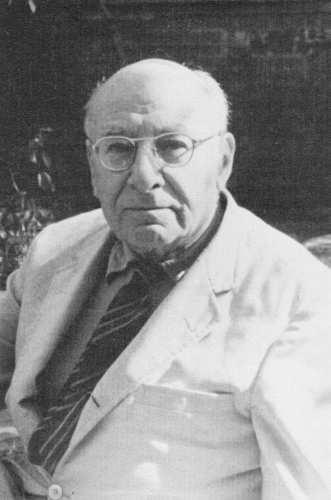The fiaba
You choose to use the fairy tale about the possibility of bringing the inner world of children that it offers. It can be regarded as a representation of the inner dynamics of the subject which produces it
The origin of fairy tales is as old as the World; just think that before the invention of writing the transmission of mythical tales took place orally and many of the stories that have come down to us today are numerous versions, none of which is probably considerable than the official, having their origin not always be identified.
The salient feature of the story is that it is imbued with archetypal content, therefore common to all human beings regardless of culture, although these will declinino then the different versions. Although the authors are often unknown to show that the paternity of Faulty stories is of little importance, from the moment that the content flows from the depths of the unconscious, therefore beyond the limits soggettuali. The themes in fairy tales, those stories that full you can call these, reflect general themes, as well as ancestral fears which transcend cultures of.
Jung claimed:
The deeper states of the psyche lose their individual uniqueness as they descend into the darkness. The farther down you go down, ie the closer you get to functional systems autonomic, they become more collective, up to universalize and become extinct in the materiality of the body, ie in the chemicals. The carbon body is simply carbon. Therefore, in the bottom of the psyche is simply world.
E Marie-Luise Von Franz: “Fairy tales are the simplest and purest expression of the mental processes of the collective unconscious ".
At this point, I would like to reflect.
Although fully agree with the "tightness" of the fairy tale of the cultures, I think it important not to forget that the cultures and historical and cultural moments, are capable of producing the distortions in the original narrative, attributing mostly moralistic-religious character, where possible, the story, the use and consumption of a part of the company rather than another. With this, I emphasize the need to take into account that no story in my opinion can be totally free from cultural reverberations.
So not only will be declined otherwise if it is a story of an African or European, for example if the different ideas of crises that exist in two realities( the first real crisis of survival, in the second maybe a desire, cites as Lafforgue, but reflects sia sia la worldview, perhaps especially, the morals of the time and place.
Just think of the fairy tale Little Red Riding Hood; in Perrault's version, references to sexuality and the stigma are easily detected. In fact in that version, the wolf goes to bed, after having devoured the grandmother, without wearing his clothes and wait for CP. When the child arrives he undresses and gets into bed next to the wolf "naively" believed to be the grandmother. Here CP refers then to the great legs and large arms, unusual to be grandmother's. In the version of the Brothers Grimm, these two references are not there and CP note ears, La Bocca ed and teeth.
In Perrault's version also, the fairy tale ends with a short poem which in practice is the moral of the story: the beautiful girls do not have to listen to strangers, otherwise then .....
It 'so obvious as the culture of the time or, to limit the culture of the individual, can change the course of history, depriving it of the original meaning and saturating it with a set of pre-judgments.
That said, the real invariants of the story remain so and no culture can change the, but what I personally suggest a prudent use of fairy tales in the therapeutic.
What will make a difference will be the way to describe, personal style, the ability to adapt the story to the context; not distorting the content of blindly following their anxieties or its ambitions, but relying on their unconscious, do just the story, experiencing and sharing the emotions it arouses.
During the story, the voce, the prosody change and the cause of these changes is not attributed solely to our experiences, but is the result of the interaction of the teller and the listener. Once again it is the relationship that has an influence on the course of the story. The continuous feedback that the narrator receives during the story, in terms of comments, of facial expressions, leak or immobility is a key element to be able to tune in and establish what we call " the narrative pact ". The tale told in this way, capture the listener to the point that his emotions can be tied inextricably to those of the characters that inhabit the story. I remember that humans develop a theory of mind, namely the ability to attribute mental states and intentions to another entity, from the four or five years of age.
Another important aspect of the story is that the characters are that it proposes and describes unique, therefore are not ambivalent. Good and evil coexist in the story but not within the same person, as it happens in reality, and embody it in different characters. Unlike other children's stories, Here we see not ravvedimenti or repentance on the part of the villain who then becomes good or vice versa; The wolf and the witch of the fairy tales are what they are, and this is their property to allow the child to project their own parts of these figures clearly. In other words, the fairy tale oversimplifies the dividing the world into good and evil and that is what makes it understandable to the child's eyes.
As Bruno Bettelheim says about the fairy tale characters:
“All the characters are typical rather than unique ".
In fairy tales the existential problems are put clearly and simply allowing the child to catch them. The villain does not stop doing bad because someone punishes him, But he always loses, suggesting that the child should not be bad not because you are punished, but because the protagonist (l'Forever) fate has much better.
The recurring narrative themes,reveal our common desires and needs.
Patrick Colm Hogan, Professor of English and Comparative Literature at the University of Connecticut says about the narrative: “involves agents that pursue a goal and purposes most usual are in part the result of the way they are made of our emotional systems ".
This confirms that the stories reveal something of human emotions and their place in the mind.
Hogan claims that seem to be three narrative models: one romantic setting, that focuses on the trials and tribulations love; one scenery heroic, siconcentra that the struggle for power; Finally, one scenario that defines "Sacrificial”, that focuses on the abundance opposed to the famine and the redemption of the company. These three basic themes seem to be always present regardless of cultures and eras.



